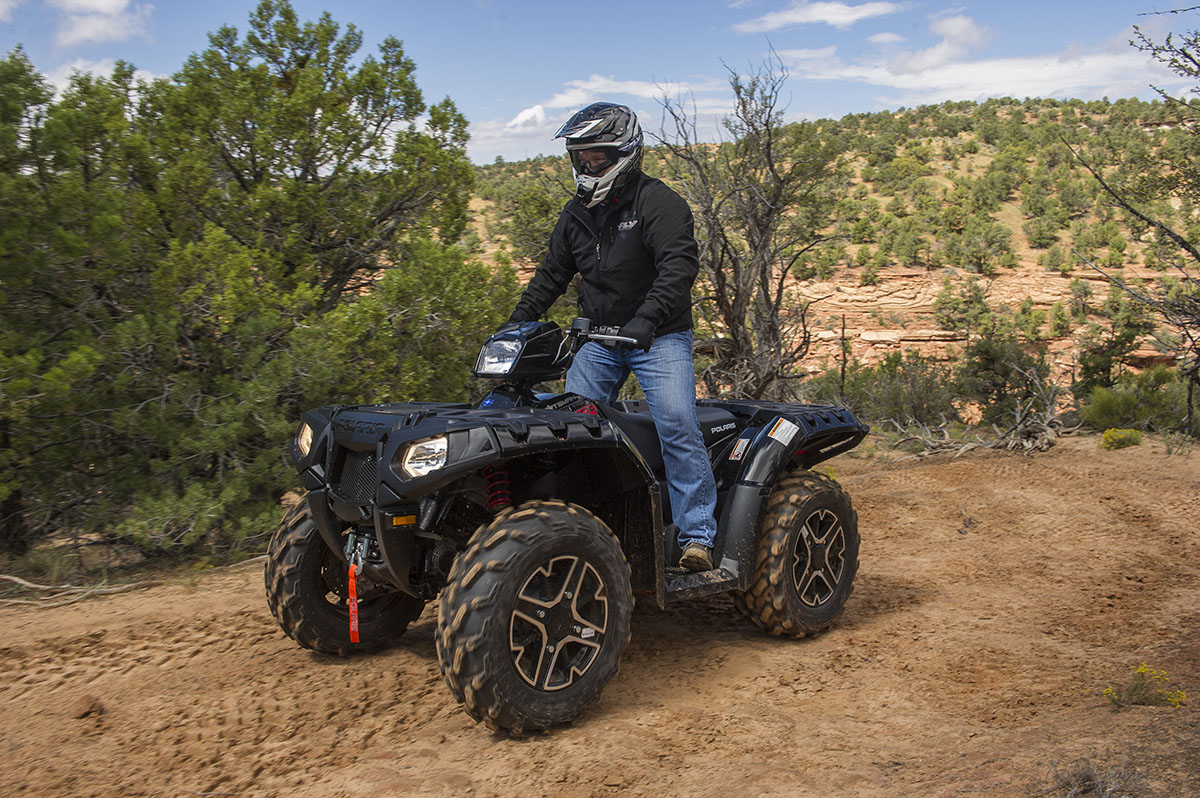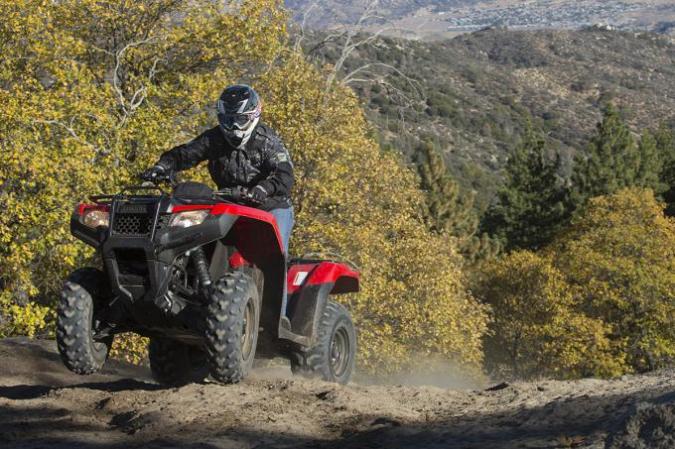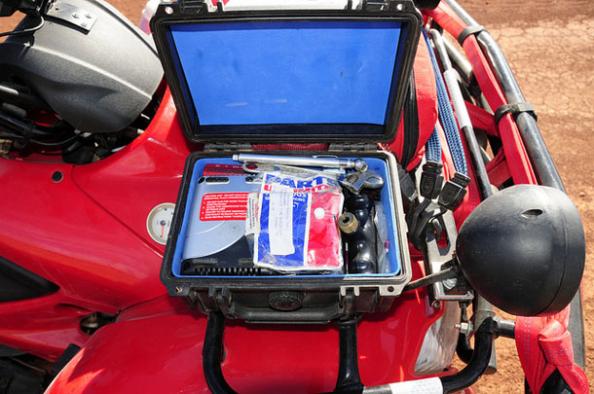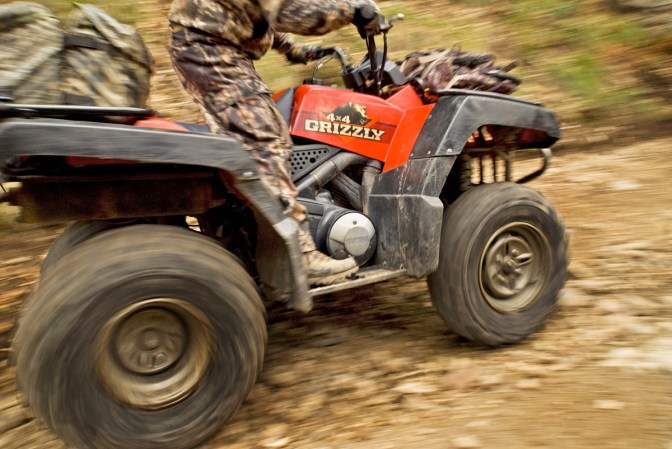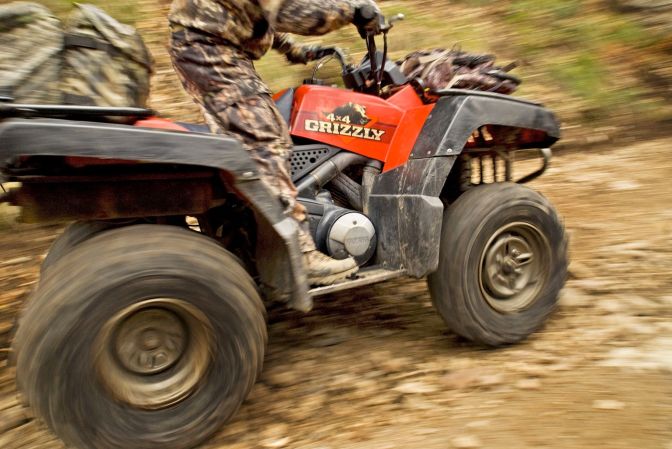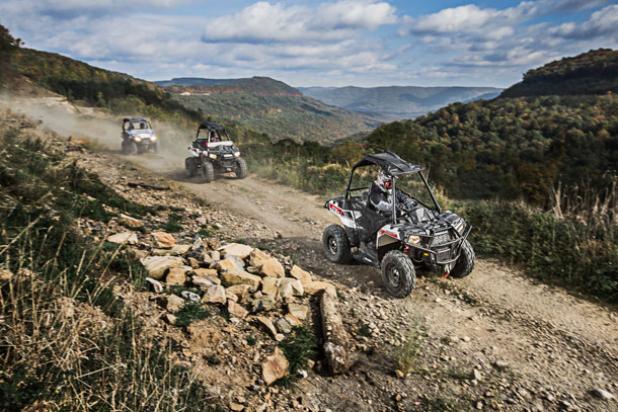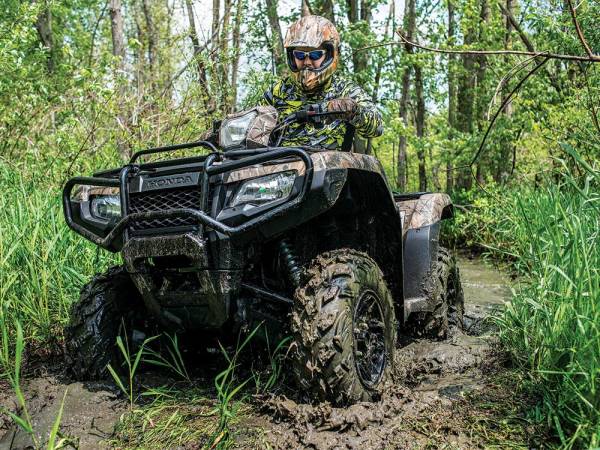We may earn revenue from the products available on this page and participate in affiliate programs. Learn More ›
The stock tire size on your ATV or SXS is specifically built and chosen for the engine size, suspension geometry, and the transmission’s ability to spin that wheel and tire combo. But down the road you might want to add a different set of wheels, and chances are you’ll also want to get a better-than-stock tire for those new rims. When you think about adding a larger tire or going with a different rim, there are several things you must consider.
1. Note the offset of the wheel itself, and to try to remain with the same or similar offset. In laymen’s terms, the offset of the wheel is how far the rim sticks in and out from its mounting point when on the machine. This number can dictate how the steering works. Wheels that are more offset outward can make it harder to turn the handle bars, while too much inward offset could bind on other components.
2. Pick a reasonable tire size. Wanting a big 4X4 look can come at a high price, so be sure your machine has the space in the fender to roll and turn that big tire. Most stock-size ATV’s and SXS’s can stand wheels that go up size or two without scrubbing on normal terrain, but when the suspension starts to really work hard and the wheels bounce up and down, it’s a different story.
3. Consider aftermarket heavy-duty axles to go with your new wheels and tires. Oversized tires and wheels not only take a toll on the power plant, but the driveline as well. CV axles will wear faster—and some very prematurely—because they are now having to spin the heavier tire at your command, and simply can’t handle the strain. So consider the heavy-duty axles now (or at least sooner rather than later). If you have a belt-driven transmission, this too may need to be upgraded to spin the bigger tires.
